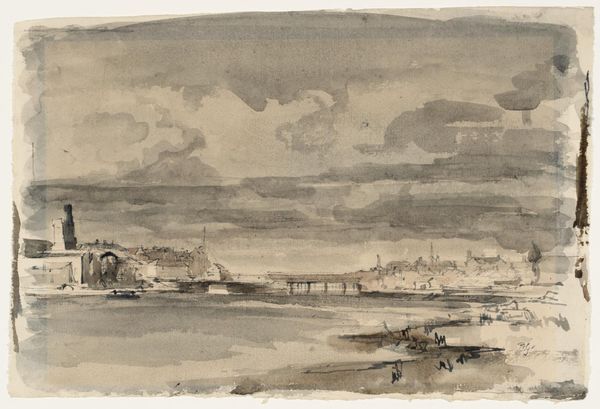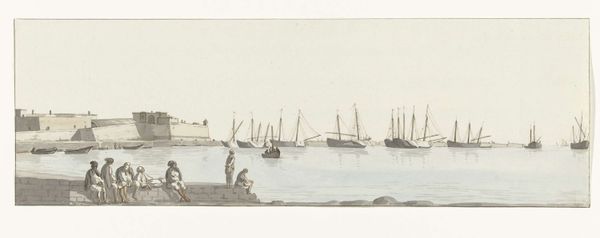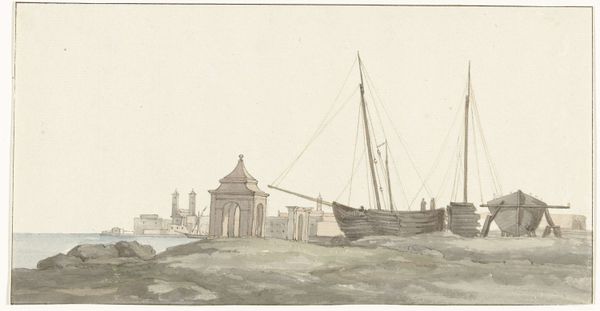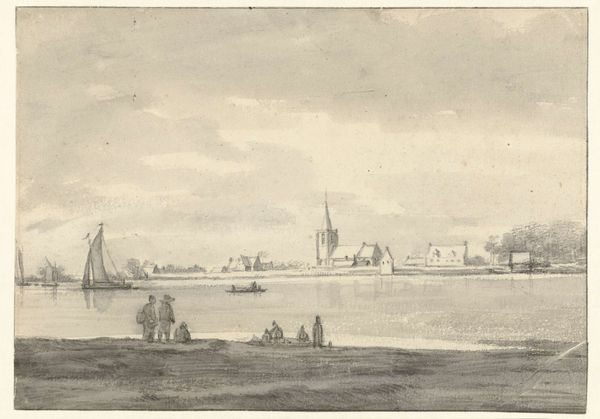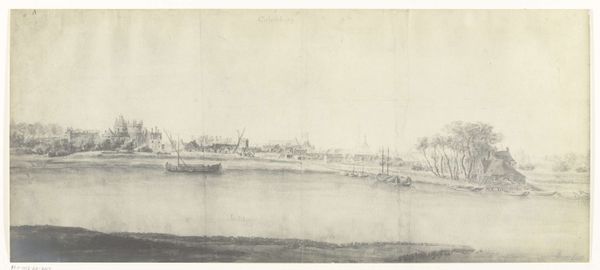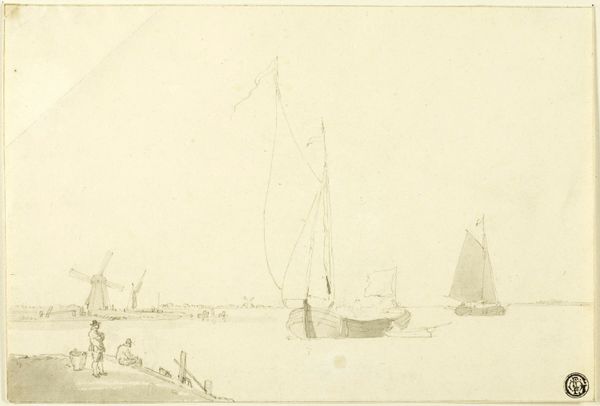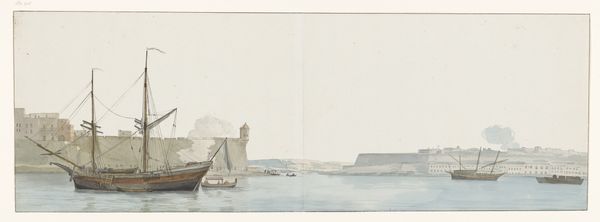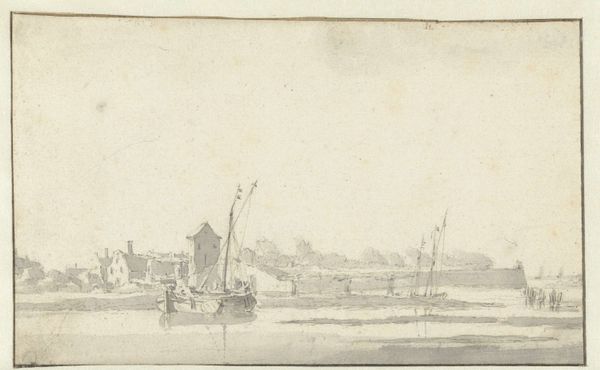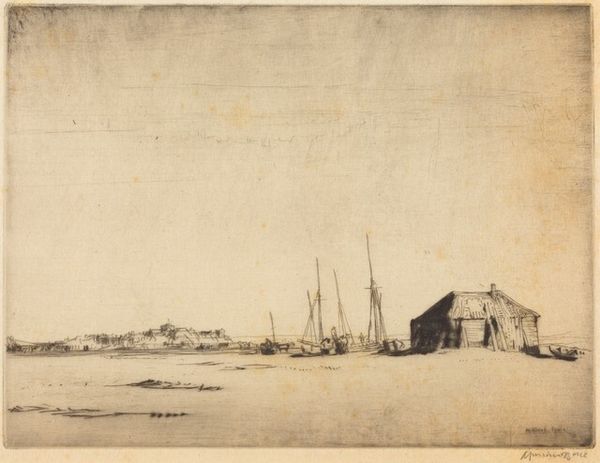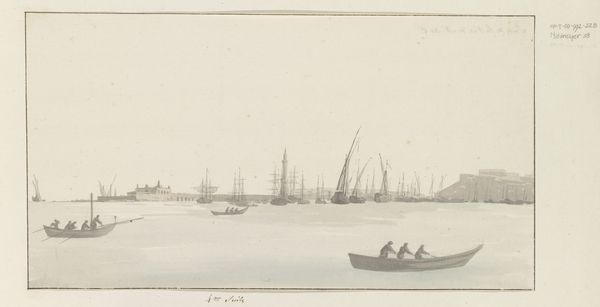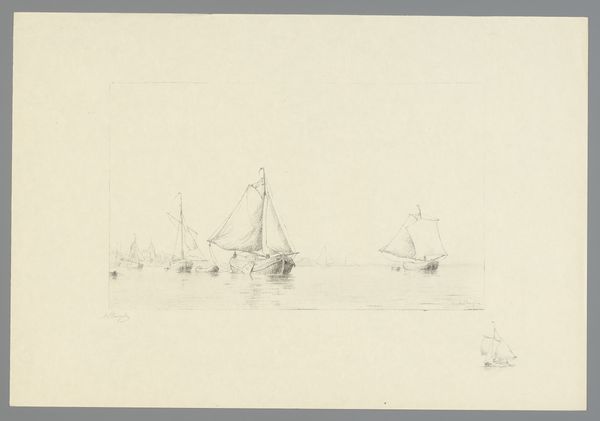
Dimensions: height 207 mm, width 308 mm
Copyright: Rijks Museum: Open Domain
Editor: This is Louis Ducros's "Haven van Barletta met schepen" or "Harbour of Barletta with Ships" made in 1778 using ink. There's almost a stillness to the scene, with the ships gently resting on the water. What can you tell us about its context? Curator: This cityscape provides a glimpse into 18th-century port life and artistic patronage. Ducros, a Swiss artist, was known for his landscapes, catering to Grand Tour travelers. The accuracy of the depiction highlights the growing interest in documentation and topographical studies during this period. How might this reflect the socio-political landscape? Editor: It makes me think about the role of ports as centers for trade and cultural exchange, as well as colonial power. Were these picturesque views used to legitimize certain political and economic realities? Curator: Exactly. These idealized scenes often glossed over the harsh realities of maritime trade and the exploitation associated with colonial expansion. Furthermore, the Rijksmuseum's acquisition of this work, itself, can be viewed within a framework of national identity and art collecting practices in the 19th and 20th centuries. What kind of statements were museums hoping to make with these pieces? Editor: Maybe by displaying these images, museums aimed to present a curated narrative of progress and national pride while subtly obscuring some of the darker aspects of that era. It seems like appreciating the aesthetic value also demands that we ask critical questions about what's not being shown. Curator: Precisely! The beauty of the art coexists with these critical interpretations. Considering how art functions in the public sphere allows us to move past simply admiring a pretty picture and begin unpacking more complicated histories. Editor: I definitely see this piece in a new light now, thinking about art’s place in these power structures. Curator: Understanding those complexities enriches the way we experience and interpret historical art.
Comments
No comments
Be the first to comment and join the conversation on the ultimate creative platform.
